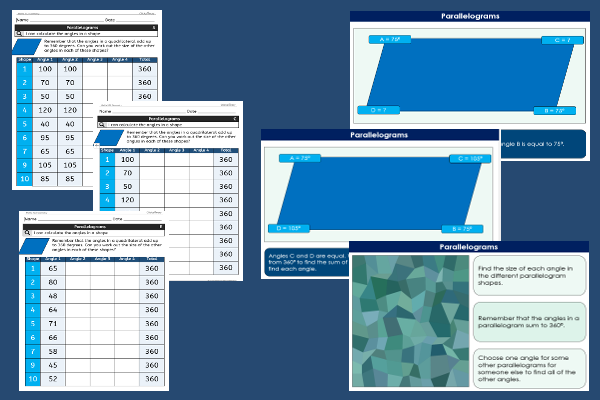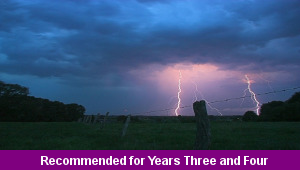Home > Key Stage Two > Maths > Geometry > Angles > Shape Angles
Parallelogram Angles

This maths teaching pack for Key Stage Two gets the children to identify, classify and calculate the size of each of the four angles that can be found in different example parallelogram shapes.
The class can model and record how to use number calculations to find the values of the angles in each parallelogram to match the sum of three hundred and sixty degrees.
Download this teaching pack including classroom activities and an interactive presentation to identify, classify and calculate the size of each of the four angles that can be found in different example parallelogram shapes
Activities in this teaching pack include a set of differentiated worksheets to select and calculate the size of each of the four angles that can be found in different parallelogram shape using protractors and calculations to check that the angles in each parallelogram sum to three hundred and sixty degrees.
The interactive presentation gets the children to explore how to calculate the size of each of the angles found in different parallelogram shapes.
This lesson is part of a maths scheme of work to get the children to identify, record and classify some of the different types of angles that form the individual properties of a range of 2D shapes. There are teaching activities for shared learning, differentiated worksheets to support independent learning and interactive presentations to introduce concepts and key skills.
-

Grams and Kilograms Measurements
Practise measuring, recording and calculating measurements in mass when working with and converting units in grams and kilograms
-

World Animals
Identify and record how to use the correct determinants before nouns in sentences about animals that live in different habitats around the world
-

Determinants Vowels and Consonants
Investigate and record how to compose sentences when using the correct determinants before nouns to match their initial vowels or consonants
-

Weather Events
Investigate how to add and punctuate fronted adverbials in model sentences explaining when, how or where something happened in the weather
